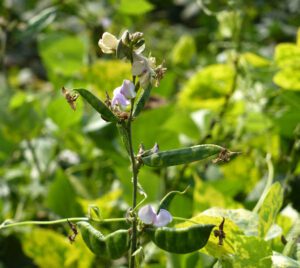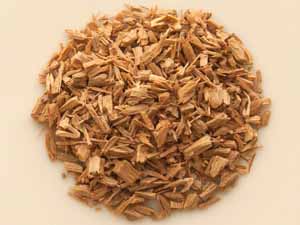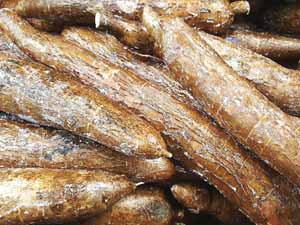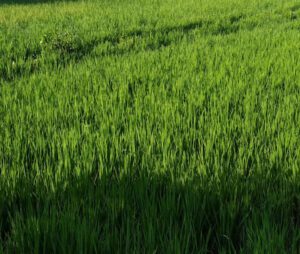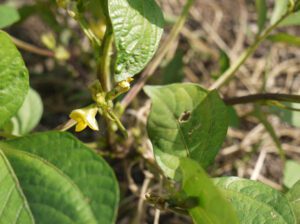Commercial saffron farming is not a new business idea. It’s a pretty old business and many people are already doing this business in many countries around the world. There are some doubts remain on the origin of saffron, but it is believed that saffron originated in Iran. However, Greece and Mesopotamia have also been suggested as the possible region of origin of this plant.
Saffron is actually the most expensive spice in the world and it is derived from the dry stigmata of the saffron crocus plant (Crocus sativus). It has long been the world’s costliest spice by weight. The vivid crimso stigma and styles, called threads are collected and dried for use mainly as a seasoning and coloring agent in food.
Saffron’s taste and iodoform-like or hay-like fragrance result from the phytochemicals picrocrocin and safranal. It also contains a carotenoid pigment, crocin, which imparts a rich golden-yellow hue to dishes and textiles.[1]
Saffron is known by different names in different parts of the world. But it is popularly known as ‘Red Gold’. The saffron plant is a bulbous, perennial with globular corms, having 15 to 20 cm height. Saffron is mainly cultivated in Spain, Austria, France, Greece, Iran, Turkey and England. Among all these countries Iran alone produces around 90% of the world total production. Saffron is the world’s most expensive spice, at US$5,000 per kg or even higher.
Actually, saffron’s price depends on the intense labor needed to harvest the crop, not because it is difficult to grow. Actually growing saffron is very easy and simple.
Uses of Saffron
Saffron has a long history of use in traditional medicine. It has also been used as a fabric dye (particularly in India and China) and also used in perfumery. And in India, saffron is also used for religious purposes.
Health Benefits of Saffron
Saffron is healthy and beneficial for human health. Here we are trying to describe the top health benefits of saffron.
- Saffron contains an impressive variety of plant compounds (such as crocin, crocetin, safranal and kaempferol) that act as antioxidants.
- Saffron may improve mood and treat depressive symptoms.
- As saffron is high in antioxidants, so it may help kill cancer cells while leaving normal cells unharmed.
- Smelling and also eating saffron may help to treat PMS symptoms (such as headaches, pain, cravings, irritability and anxiety).
- Saffron may have aphrodisiac properties for both men and women and may especially help those talking antidepressants.
- Saffron may reduce appetite and aid weight loss. Because it has been shown to reduce snacking and curb your appetite.
- Using saffron may improve memory in adults with Alzheimer’s disease.
- Saffron may raise insulin sensitivity and may lower blood sugar levels.
- Saffron may improve eyesight in adults with age-related muscular degeneration and may reduce heart disease risk factors.

Advantages of Saffron Farming Business
Like many other crops, saffron farming business has also numerous advantages. Actually, saffron farming is very easy and simple, even the beginners can start commercial saffron production business. Although, we always recommend having practical knowledge and experience from an existing farmer before starting commercial operation. Here we are trying to describe the top advantages of saffron farming business.
- Saffron farming is not a new business idea, people are doing this business from the ancient time.
- It’s already an established business, so you don’t have to think much about starting and operating this business.
- Starting commercial saffron farming business is very easy and simple, even the beginners can also start this business easily.
- Initial investment in commercial saffron farming business is relatively less as compared to other crop farming business.
- Commercial production of saffron is highly profitable. So, it can be a very good employment source for the people, especially for the educated but unemployed people.
- Both demand and price of saffron is very high in the international market.
- Production cost is less as compared to other crop production business.
- Saffron is healthy and highly beneficial for human health. You can enjoy it if you start your own production business.
How to Start Saffron Farming?
Starting commercial saffron farming business is very easy and simple. Even the beginners can also start this business easily for making money. Although, having practical knowledge from an experienced farmer will be very beneficial for your business. Here we are trying to describe more information about starting and operating a successful saffron farming business.
Site Selection
Saffron grows well in acidic to neutral, gravelly, loamy and sandy soils. It requires well-drained soils and the optimum pH level of the soil should be between 6 and 8.
Prepare the Soil
Preparing the soil perfectly is the most important part of commercial saffron farming business. Try to make the field weed free and add as much organic matter as you can. Perform couple of ploughings for bringing the soil to the fine tilth stage and soil loosening is also required before planting the corns for better growth.
Climate Requirement For Saffron Farming
Generally, winter is the vegetative growth season and leaves will be dried out in the month of May. Saffron can nonetheless survive cold winters, tolerating frosts as low as −10 °C (14 °F) and short periods of snow cover.
Best Time For Saffron Cultivation
Best time for planting saffron is from June to September.
Propagation
Propagation in saffron is done through compressed underground stems (corms).
Purchase Corms
For commercial saffron production, you have to purchase corms from the market. Today, there are some nurseries available with online presence. So, you can also order online.
Planting
You can plant saffron corms directly in the field for commercial production, or in pots for small scale production or in home garden. You should plant the corms at 12 to 15 cm deep by maintaining 10-12 cm spacing between them. Irrigation is not needed after planting, however in case of prolonged drought and hot season watering can be carried out depending on the soil moisture content. Saffron corms generally multiply from one year to the next and 1 corm get 5 corms after 3 years of planting.
Caring
Saffron plants are very strong and hardy and they generally require less caring and other management. Although taking additional care will help the plants to grow well and produce more.
Fertilizing: You have to apply adequate organic fertilizers during the time of land preparation. And annual application of 80 kg P, 30 kg K and 20 kg N per hectare is beneficial. Apply these fertilizers in autumn and again immediately after flowering.
Watering: Irrigation is not needed immediately after planting. But in case of prolonged drought and hot season watering can be carried out depending on the soil moisture content.
Mulching: Mulching helps to retain moisture into the soil and it also helps to control weeds. You can use organic materials for using as mulch.
Controlling Weeds: Mulching with organic matter will prevent most of the weeds. Regular hand weeding is a must, and application of weedicides can be effective in commercial production.
Pests & Diseases
Like many other commercial crops, the saffron plants are also susceptible to some common pests and diseases. There are actually 3 main diseases Fusarium, Rhizoctonia crocorum and Violet root rot found in the saffron farming. Contact your local horticulture department for control measures. It is also recommended that the same field should not be used again for 8-10 years.
Harvesting
Flowering generally starts in the month of October and last for a month. And harvesting should be carried when the flowers are in full bloom stage and early morning picking is proffered. Extract the red pistils from the flowers after harvesting the flowers.
Drying of filaments can be done by putting the pistils on a sieve in a well ventilated place for 15 minutes. Fresh saffron generally does not have any taste and it is recommended that dried saffron should be placed in an airtight container away from the light for at least 1 month before it’s consumption.
Yield
For getting 1 gram of dried saffron, 150-160 flower are needed. Generally 60-65 percent of corms will produce 1 flower each during the first year of plantation, and each corm will produce about 2 flowers in the subsequent years.
Marketing
Marketing saffron is very easy and simple, because it has high demand and value in the international market. You will probably be able to sell your products easily. Although, you should set your marketing strategies before starting this business.
These are the common steps and ways for starting and operating a successful saffron farming business. Hope this guide has helped you! Good luck and may God bless you!

